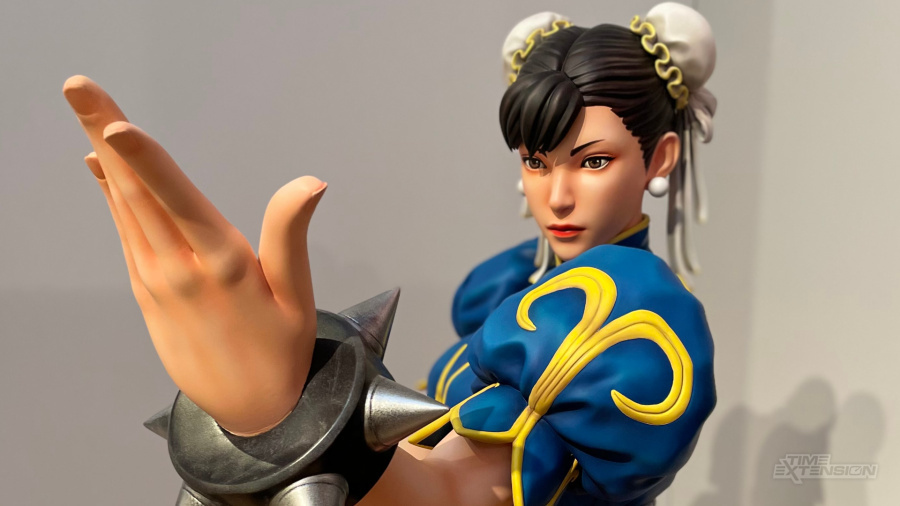
On 12th August this year, Street Fighter will turn 35 years old. Capcom has heralded the occasion by revealing Street Fighter 6 and releasing the Capcom Fighting Collection. Yet in Japan – of course – it has gone a step further by opening up a pop-up exhibition at a handful of cities around the Land of the Rising Shoryuken. And since it’s quite difficult for tourists to get into Japan at the moment, we thought it prudent to check it out for those who can’t.
One of these exhibitions opened up in the unassuming Kitakyushu city, where the exhibition took up the fourth and fifth floor of the Municipal Museum of Art Annex. Tucked away inside the Riverwalk shopping centre, we made our way there on a sweltering Saturday afternoon, stopping only to take in the majesty of Kokura Castle on the far side of the six-storied mall.
After purchasing our tickets and receiving complimentary stickers of Chibi-Chun Li and Chibi-M. Bison, the staff emphatically informed us that some exhibits were off-limits to photography, stopping short of Tiger Kneeing our prepped camera from our hands. We could still photograph several key areas of the exhibition and took copious notes on the areas that we couldn’t – the official website has some of the off-limits art, if you're interested.
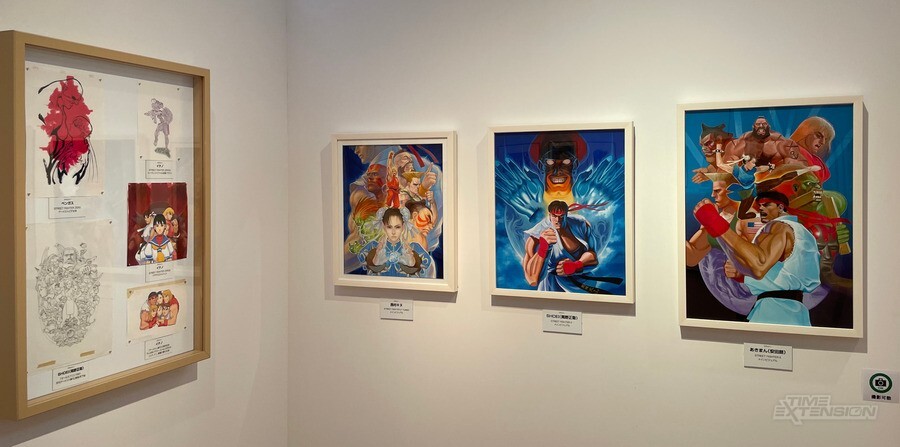
Upon entering, two remarkably detailed life-sized statues of Chun-Li and M. Bison greeted us. These statues put into perspective how ridiculous the Street Fighters’ proportions are. M. Bison clearly never skipped a gym day, given that his forearms outsized our head in both height and width. Much has been said about Chun-Li’s thighs – and at this point, the less said the better – but her hands stood out even more. It’s a wonder she doesn’t have more punching moves with such huge mitts.
The main section of the exhibition – called ‘Round 1’ – wrapped around almost the entire fifth floor of the museum. Here every character from the original Street Fighter II and its subsequent special editions and re-releases received a glass panel filled with concept art and character designs drawn by their original artists, particularly Akira Yasuda and Akira Nishitani. Unfortunately, stern-faced staff dogged us every step we took, peeking around life-size cutouts of Street Fighter II’s roster to make sure we didn’t quickly snap any photos.
Primary characters such as Ryu and Chin-Li received nearly double the real-estate of characters such as T. Hawk and Dee Jay, the former two having more than a dozen original pieces of art locked behind glass panels. Chun-Li also received a gorgeous, life-sized oil painting we strived to take a photo of, but the persistent staff never left us alone long enough for us to take a cheeky snap.
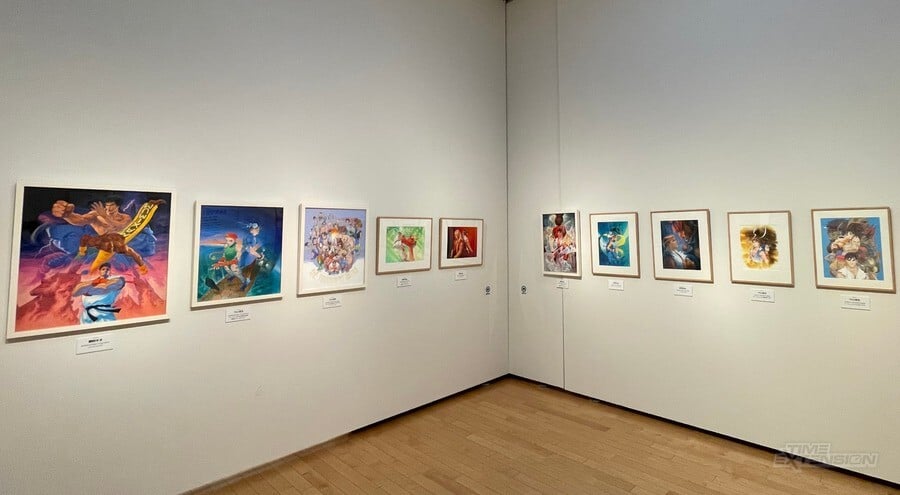
Several displays – including Ryu, Chun-Li, Ken, and most notably Cammy – held detailed instructions on how each character should be drawn as well as tidbits about their history. Chun-Li, for example, should always have her bangs on the left side of her forehead, a style which she maintains in her Street Fighter 6 reimagining. The flaps of her modified qipao are never to be drawn wrinkled or otherwise dirty, alluding to the high-quality of the fabric. There were also instructions on how to properly part Ryu’s hair. A hyper-detailed pencil-drawn photo of Cammy’s back compared her design to a ballet dancer, and another sketch emphasised that she shouldn’t act like the other mind-controlled Dolls.
The villains of Street Fighter II – Akuma, M. Bison, Vega, and Balrog (with their names un-swapped in Japan) – received their own section with similar concept art and design notes. In the corner of this section, however, we came upon something of a shrine encasing one of Street Fighter II’s original arcade-cabinet motherboards, complete with flickering electric candles as if it were a holy relic. There were also detailed drawings here drawn on grid paper showing how much space a Shoryuken and a Spinning Bird Kick should take on-screen.
Beyond this, we entered ‘Round 2,’ which consisted of art that will (and we’re translating literally here) “make fan’s hearts hot.” These works consisted of three walls of art created for promotional purposes and that you may have seen before. As a result, we were able to snap a few photographs here, though a large display made for Sakura was explicitly off-limits to our lens.
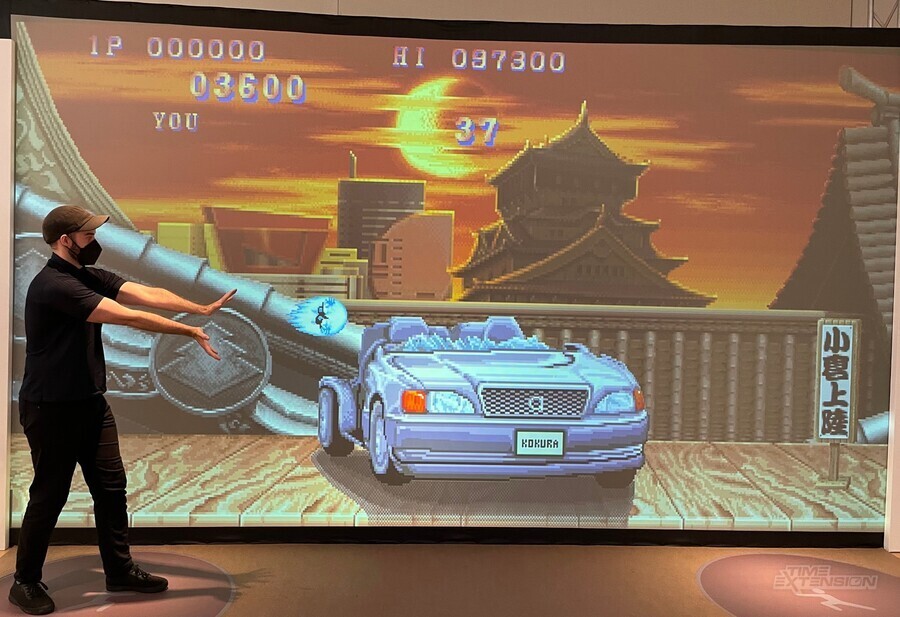
After this, the Kitakyushu exhibition seemed to shuffle around ‘Round 3’ and the ‘Extra Round’ to display the ‘Core Round’ first. We found this area the most fascinating. Here, original design documents detailed how the game should be played along with hand-drawn sketches of where each grouping of pixels should go on grid paper. Some moves were also detailed on these grid spaces, such as Ryu’s reverse jump being 144 ‘dots’ high. There were even little cut-outs of the characters pasted onto stage backgrounds to give perspective to developers.
Just below the ‘Core Round’ on the fourth floor, we came upon ‘Round 3’ and the ‘Extra Round.’ Round 3 showcased the art that went behind the victory screens for the single-player arcade mode. Ken carrying his wife, Chun-Li paying respects to her grandfather, and so on. There was also a small section dedicated to the casts’ iconic crying and busted-up faces during defeat, complete with a little arcade cabinet where you could have your picture taken and inserted onto your Street Fighter of choice as they lamented their loss.
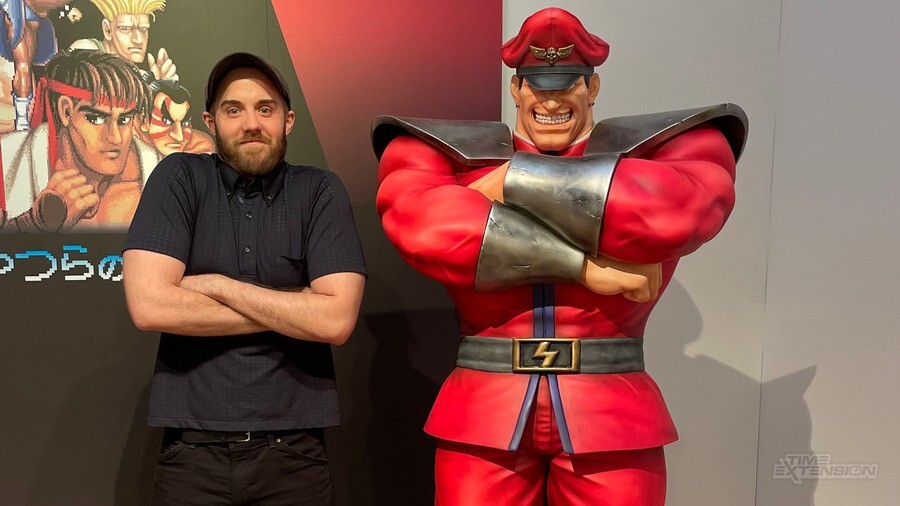
And while this exhibition was put together for Street Fighter’s 35th Anniversary as a whole, the original Street Fighter received only a single ‘Extra Round’ section that crammed together everything we saw previously with Street Fighter II – early character designs, key concept art, and so on.
That held our attention only for a moment because behind us was the massive screen for the ‘Hadouken Experience.’ Using gestures, attendees could stand on a specific spot and cast Hadoukens to destroy the car from a Street Fighter II bonus stage. We managed to destroy the car after about 20 seconds of flailing our arms about. The neat thing, however, was the view in the background. Instead of the original’s oceanside dock, this exhibit put together a special background featuring a view of Kokura Castle and the Riverwalk mall.
A section to play Street Fighter II through V (on, strangely enough, controllers rather than arcade sticks) rounded out the exhibition with a long table lined up against a wall filled with merch – postcards, magnets, t-shirts, coffee mugs, and some impressive artbooks. We bought a magnet to mark the occasion of visiting one of the more impressive gaming exhibitions we’ve seen, resplendent with behind-the-scenes details and fascinating original art, and left quite satisfied to have dropped ¥1200 for a ticket. We hope Capcom puts on a similar event for the 40th anniversary when Japan – fingers crossed – might have eased its border restrictions.






Comments 1
There's something both really nice looking yet also occasionally unsettling about old Street Fighter art. It's certainly iconic, don't get me wrong, but some of them just look..... off (like the SNES version's boxart for example).
I'd say the point where the series finally nailed it's art (for both the games and covers in fact) would definitely be the Alpha and 3 series. They both go for very different aesthetics (Alpha goes fully anime whilst 3 goes fully underground punk) yet the art is consistently brilliant between them. For example:

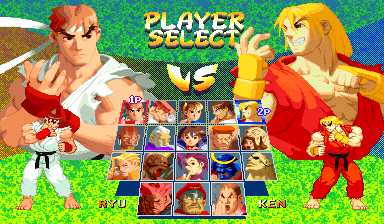


And that's not even mentioning the gorgeous spritework at play in both games as well!
Show Comments
Leave A Comment
Hold on there, you need to login to post a comment...